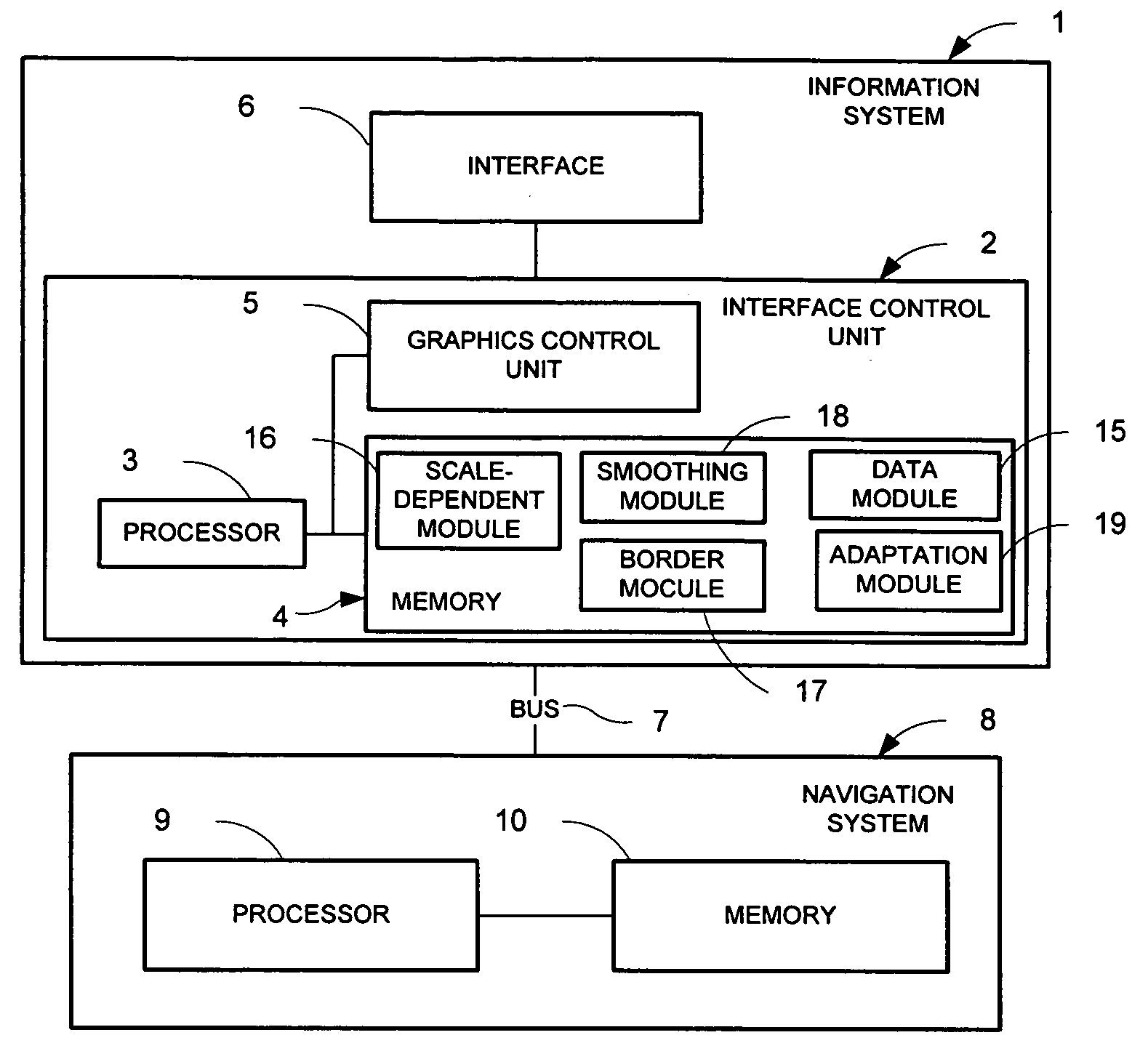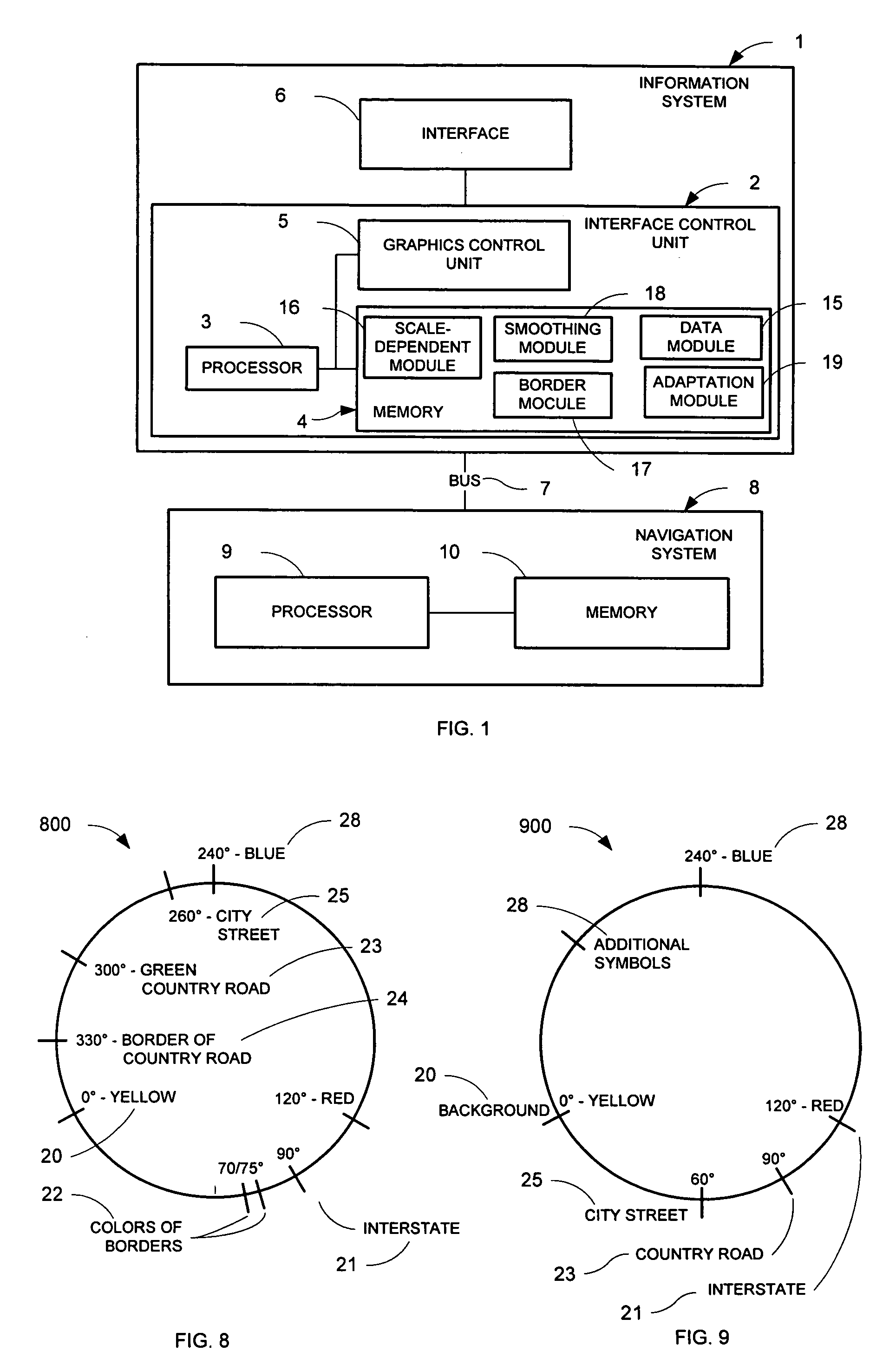Ergonomic map information system
a map information system and ergonomic technology, applied in the field of ergonomic map information system, can solve the problems of excessive user attention, coarse representation, and coarse map portions, and achieve the effect of fast processing of graphic data
- Summary
- Abstract
- Description
- Claims
- Application Information
AI Technical Summary
Benefits of technology
Problems solved by technology
Method used
Image
Examples
Embodiment Construction
[0027]FIG. 1 depicts a system for the ergonomic representation of maps and / or portions of maps (“ergonomic map information system”) 1 in communication with a navigation system 8. The ergonomic map information system 1 may produce a representation of a map or portion of a map that may be intuitively understood by a user. The resulting map or map portion representation may increase the usefulness of the map or map portion. Further, if the ergonomic map information system 1 is implemented and used in a vehicle, the resulting ergonomic map representation may be less distracting for the driver. The ergonomic map information system 1 may include an interface 6, and an interface control unit 2. The interface control unit 2 may include a processor 3, a memory 4, and a graphics control unit 5 for controlling the interface 6. The processor 3 may control the operation of the ergonomic map information system 1. The interface 6 may communicate the map portions with a user. The graphics control u...
PUM
 Login to View More
Login to View More Abstract
Description
Claims
Application Information
 Login to View More
Login to View More - R&D
- Intellectual Property
- Life Sciences
- Materials
- Tech Scout
- Unparalleled Data Quality
- Higher Quality Content
- 60% Fewer Hallucinations
Browse by: Latest US Patents, China's latest patents, Technical Efficacy Thesaurus, Application Domain, Technology Topic, Popular Technical Reports.
© 2025 PatSnap. All rights reserved.Legal|Privacy policy|Modern Slavery Act Transparency Statement|Sitemap|About US| Contact US: help@patsnap.com



